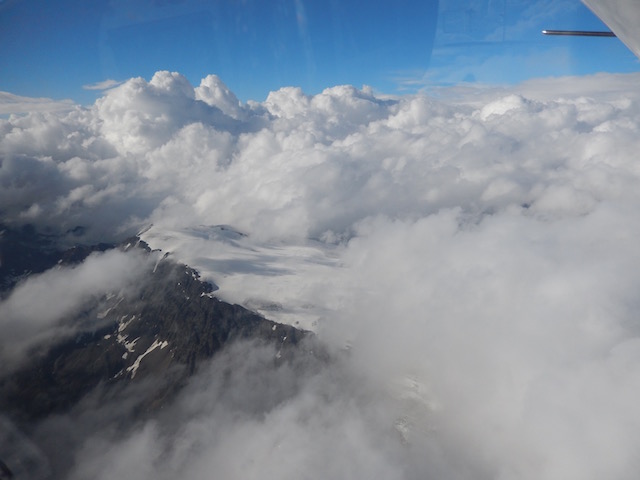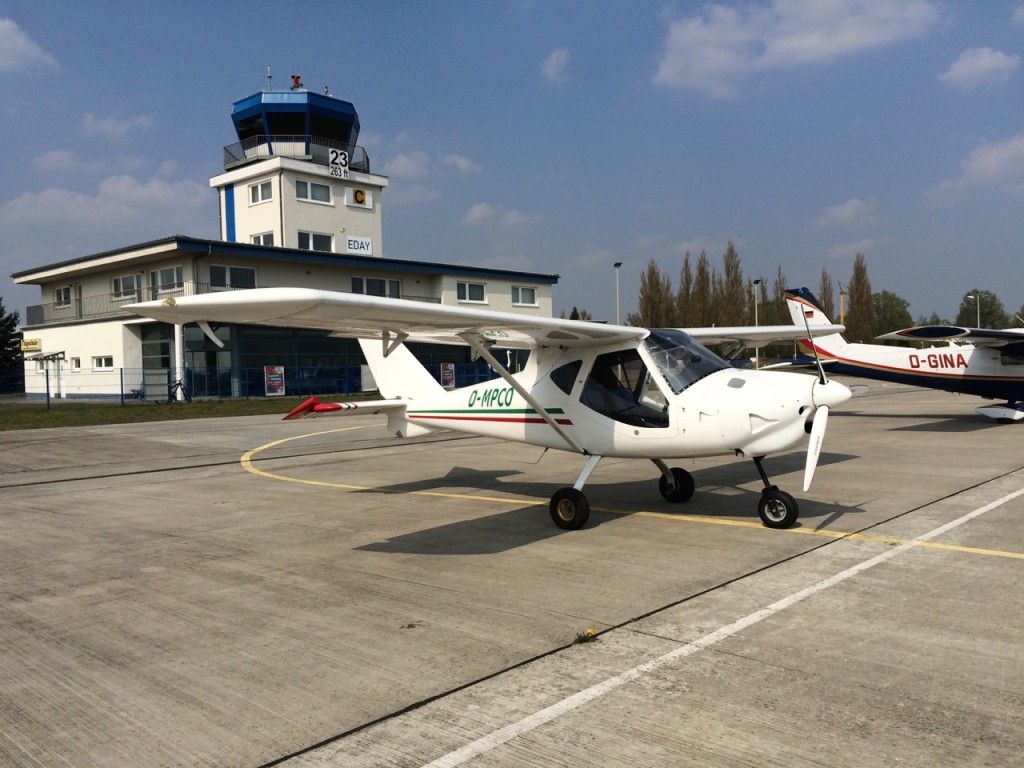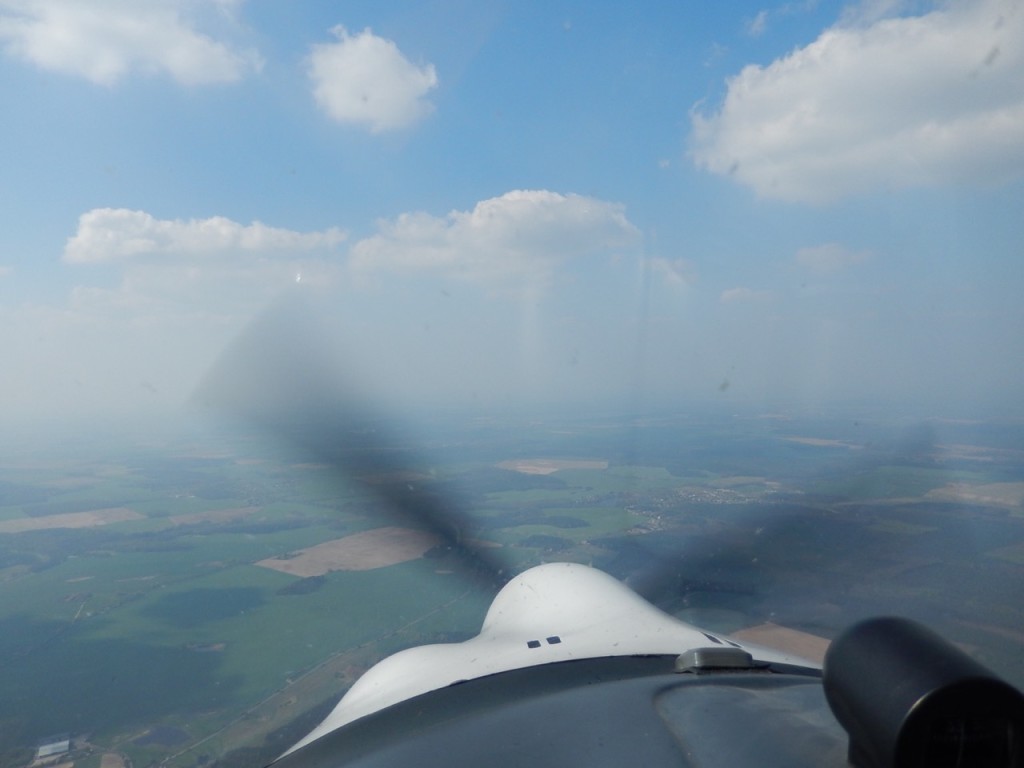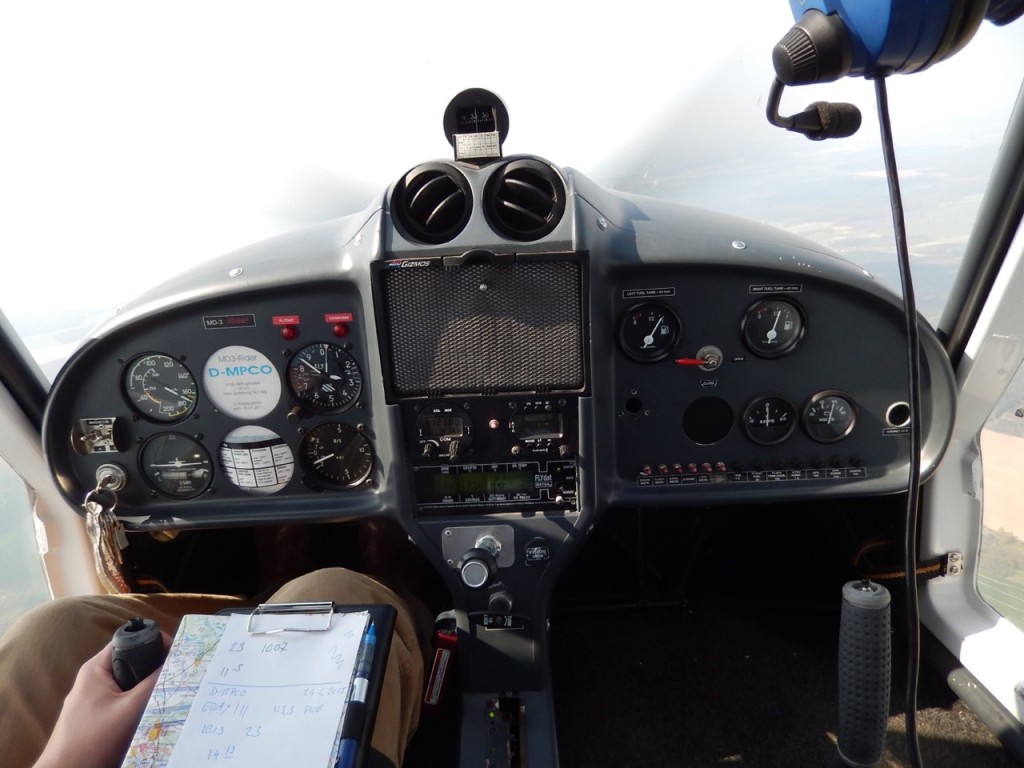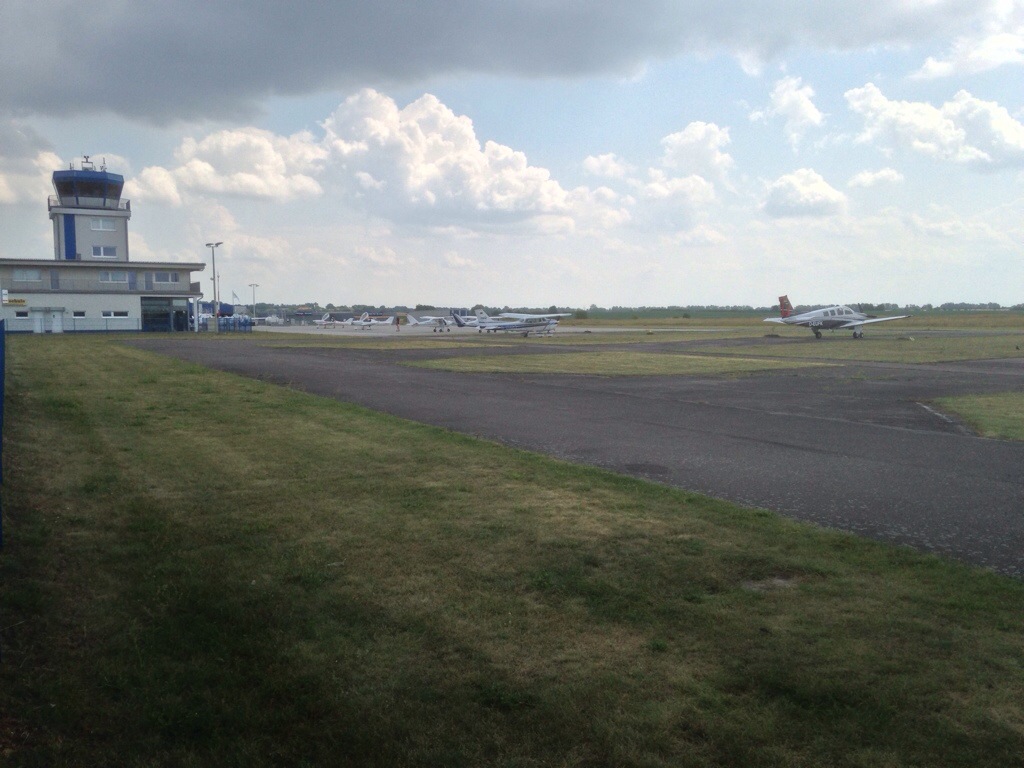Europe on a wing strut – Part 3
My flying buddy calls: „Do you remember the Europe trip we planned last year? Are you still up for it?“
Me (wondering if he can hear my smile on the phone): „Sure! When?“
Him: „Two days from now, I’ll come pick you up!“
I had planned a few days off with the family. The pilots wife roles her eyes at me when she hears about this and then gives me that smile that touches my foolish heart.
The day before the trip I go through my preparations from last year. The route has changed a bit because we only have four days to spare. This trip will be about flying and about learning new routes and seeing new countries. There will not be time for sight seeing – the view from above is all we really need anyway.
We have ambitious plans! The first day is going to take us from The Big City to Millau in southern France. On the second day we plan to cross over the Mediterranean with a lunch break on the island of Corsica and on to Florence in Italy.
For the third day we plan to cross the Alps and fly back home. Sunday will be our extra day for bad weather or nice places that invite to stay.

Thursday
I am at the airport early. I have packed light but I am sure that I will still bring things back unused. The doors of the small terminal building are open but the staff clearly does not expect anybody yet.
My ride is wheels down at 6:01 Zulu, one minute after the official opening time of the airport. We have no time to loose, there are a lot of miles in front of us. After raised eyebrows and well wishes in EDAY, we are off to EDGF, the home base of the Rocket Ship. It is on the way, makes a good fuel stop and we have a few more things to pack before the trip.
The Rocket Ship is a FlightDesign CT LSA. She is small but very capable, well equipped and she has a lot of helpful details. For example, the two luggage compartments aft of the cockpit which are big enough for our two backpacks, my headset bag, our two life vests for the Mediterranean crossing as well as two empty 20 liter fuel canisters in case we need to go to a gas station for refueling somewhere.

France
The goal for today is LFMC, Millau-Larzac in the south of France. We have a stop planned at Besançon, about half way. The Rocket Ship makes its way towards France. The clouds could be higher and the visibility could also be better. But there is nothing but improoving weather in the forecast and we are confident. Crossing the border is a non event. We are asked to contact a new controller on a different frequency but that is pretty much it.
The VFR maps of France look intimidating. There are a lot of restrictions. Neither one of us has been flying in France before but we have heard positive things about flying here.
The controller in charge of us is also handling some IFR traffic on the same frequency. Her English is flawless and full of routine and we only have problems understanding her when she talks about waypoints that we are not familiar with. The Jeppeson Navigation software on the trusted iPad is warning us of one restricted area after the other and the controller clears us for all of them. We only have to deviate from our course to go around the airport of Lyon.
Before we know it, it is time to plan the approach into our half way stop in Besançon. Both of us are surprised about how quickly time passes. So we decide to skip the stop and continue on to Millau. There are plenty other airports on the way in case we should need a break after all.

We reach the Causse du Larzac in the golden light of the mid afternoon. The scenery of the plateau is spectacular. The airport comes in sight and there is no traffic and no controller on the frequency. We state our intentions and land with a strong, warm head wind on the long runway. Both of us need a moment before we have a full grasp of the day.
We spend the evening with friends and fresh sea food on a terrace overlooking the city of Millau. In the evening sun, para gliders are pirouetting over the hills across the valley.

Friday
We use our fuel canisters for the first time to fill the Rocket Ship up. The miracle of technology lets us file the flight plan online before we take off. After departure we contact Montpellier information and ask for our flight plan to be opened. Then we enjoy the spectacular scenery and speculate whether or not the glittering on the horizon is the Mediterranean already.

The rude awakening comes in the form of Camarque Information. Over Marseilles the friendly controller tells us in no uncertain terms that he has a problem with us. Our flight plan did not go through and we are not allowed to cross over to Corsica without one. So he tells us to find an airfield and land to file a proper plan for the trip.
Le Castellet (LFMQ)
Le Castellet is on our way and proves to be our luck. Rarely have I been treated as friendly at an airport. We get coffee, a flight plan form and all the advice we could ask for in an air conditioned lounge with view of the smart looking Global Express.
The misunderstanding is cleared up quickly. Our flight plan made it to Touluse but we were probably in the air before it had time to make its way through the system. No problem, we file a new plan and thanks to the recent training at the AZF class, yours truly masters the task in no time.

Water
From Le Castellet we are routed to the St. Tropez VOR (STP) to start our crossing of the Mediterranean. There are a number of mandatory reporting points on the route so that no small plane gets lost. We venture out onto the open waters with a bit of a weird feeling. We have both not flown over open water before.
The engine does not quit; however, the trusted iPad does! Just before passing the first of the reporting points, the Jeppeson app shows a loss of GPS signal. Fortunately, the build in Garmin also knows the points. Finding them with compass and stop watch alone would have been a challenge!

Corsica
Long before we can see the island of Corsica, we see the thunderstorm that is drenching its hills. The clouds are towering high over the land mass.
The controller informs us that our destination of Corte reports rain and strong winds. We decide to try our luck anyway and see how it develops. Corte is located on the central plateau of the island and we are greeted with rain long before we are there. After some consultation with the controller, we decide on Bastia (LFKB) as alternate.

We did not plan on landing on a towered airport but the controller at Bastia is friendly and the airfield by the sea is in the sunshine. We are number two for landing behind a commuter twin and have a difficult time loosing altitude fast enough. The last mountain we cross is about 4,000 feet high, the threshold at Bastia is at 26 feet and not far away.

The service in Bastia is friendly but the staff is clearly more accustomed to airliners than to piston scum like us. Our handling agent is young, speaks Excellent english and is breathtakingly clueless in a very charming way.
I file our flight plan to Italy with him and when we are ready to go, the tower does not have it. A few moments later, our friend comes driving back out to us to retrieve the flight plan form from me. He needs it again as there has been a technical problem with the transmission. I don’t say anything but suspect the way the paper was facing in the fax machine as root cause of his ‚technical problem‘. We leave with a warm feeling for him in our hearts.
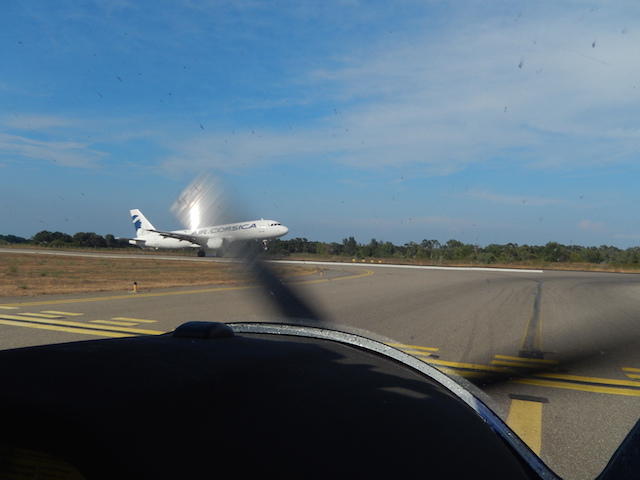
Italy
Bastia is on the eastern coast of Corsica and it does not take long before the island of Elba comes into view. The controller of Roma information does not seem all that interested in us. We both are happy when it is time to switch over to Firenze approach. The controller there is familiar with our destination aerodrome of Collina and double checks if we are, too. It will take a landing on the wrong field before we understand his concern.
On the northern border of the Firenze control zone, we cross a mountain range and then descend into a valley on approach to Aviosuperficie Collina. At the GPS coordinates from the webpage, we circle and look for the runway – but nothing. After a few minutes we see a field that looks promising. A low pass confirms our hopes, an airstrip with runway markers. So we fly a small pattern, radio our intentions and land. Italy at last!

We are on the ground safely but it does not take long before our sneaking suspicion becomes certitude – this is not Collina. A farmer tells us that Collina is only a few miles away to the west. Hard to miss as it is right next to a racing track. So we are off again and after maybe five minutes we arrive at our destination for tonight. And we are being expected. A dry spot for the Rocket Ship is prepared and the dinner table is set. The warm welcome extends into a delicious meal and good company.

The next morning begins relaxed for us. The weather is not great but a high pressure area is coming from the west. So we are not planning on leaving before noon. Time enough for a tour of the hangar and the exchange of some pilot stories.

After a good Italian lunch, we feel ready. We leave Tuscany for the Emilia-Romagna region. The city of Bologna is in the sun and we can cross midfield over the airport.

The Alps are coming closer fast, so we start climbing while we are still over Bologna. The next controller wants us to go via the Bolzano VOR. That is actually a bit further east that we would like to be but we go with that routing for now.
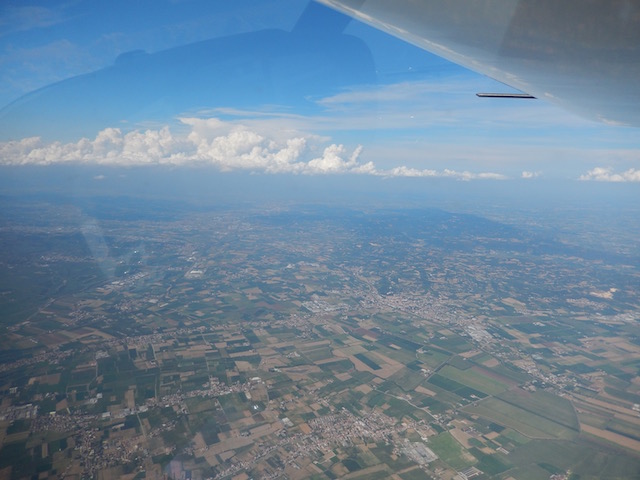
The clouds are towering high but they are clearly defined. In between them, the air is clear and the visibility is good.

We pass Bolzano to the west and go on north towards Merano on the lookout for a pass that is clear. We are high enough so that terrain is not a problem. To keep it that way, I am busy checking position, our flight level as well as the minimum safe altitude. My flying buddy is navigating around the puffy towers and looking out for a clear path.
As a team, we are safe. Alone I can see how a pilot could loose track of one or more of these factors.
The atmosphere between the clouds is very special. The sun gives the perfectly white barriers a stunning glow. My four-year-old has asked me before if one could land a plane on the clouds. I told him no but looking at them now, I am not so sure anymore.
With all of their beauty, we don’t forget for a moment how dangerous clouds can be to the untrained pilot. I did some basic training in flying after the instruments and I know how hard it is to keep the aircraft straight and level if you don’t see the horizon any more.

After a few circles, we realize that there is not going to be a clear path for us to sneak through. We finally turn west and see how far that high pressure area from the forecast has come. That’s okay, it was worth a try.
It’s not long before we call the Austrian controller. He is upbeat and friendly and does not seem very busy.
We finally meet the high pressure zone around St. Anton. As we turn north, the controller is very interested in the exact weather conditions. We can see the high pressure pushing the clouds. To the east, they are towering high over us, to the west, everything is clear. We are on our way home.
We are flying north over a patchy layer of clouds. The controller lets us stay up here so we enjoy the sun for a bit longer. We have done it; we have crossed the Alps!
Home stretch
North of Kempten, the cloud cover ends and looking ahead feels like looking over the edge of a table. We descend further and Italy and the Alps feel like a distant dream. This region used to be my flying buddies home, he knows every tree and every runway. Our thoughts start drifting off. We did it, what a trip!
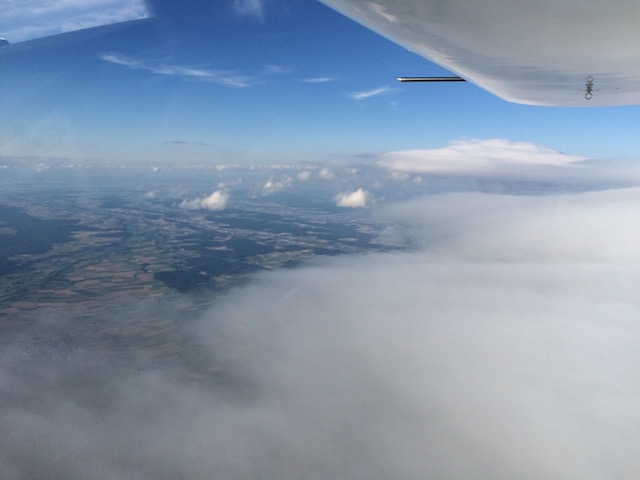
After a bit, my focus comes back to the plane and our fuel. The search for the hole on the clouds took quite some time. We have a pretty strong head wind now and the „Time Remaining“ on the fuel computer and the „Time to Destination“ on the GPS start getting uncomfortably close to each other. So we decide for a fuel stop after all.
We get into EDGF just before it starts to rain. We move the Rocket Ship into the hangar and go to the hotel where a cold beer, a hot shower and a soft bed are waiting for us.
Close to 3,000 kilometers, more than 20 hours in the air, eight legs in four days, three countries, many smiling faces and a wealth of experience. I can’t wait for the next trip!
To be continued…

